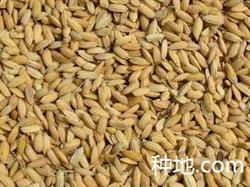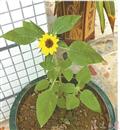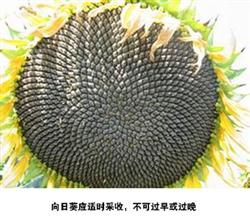How to soak seeds and accelerate sprouting of hybrid rice?

Netizens in Guangxi left a message: Rice seedlings are about to be raised, how to soak the seeds to promote sprouting? Now is the spring production season, a small number of farmers due to soaking seeds in the process of accelerating germination, due to improper operation caused seed acid odor, bad germination and other problems. Therefore, attention should be paid to: 1. Seed drying: one week before seed soaking, the seeds will be sunny for 4 hours or half a day, and then the seeds will be put in a dry, cool place to cool the heart to promote seed respiration and enzyme activity, which is conducive to improve seed germination rate and germination potential; seed drying can also kill some germs attached to rice husks. It is better to plant rice on bamboo plaques or mud, but the rice seeds should not be spread out on the cement floor or slate to prevent sunburn. 2. Seed selection: it is required to select seeds with clear water, fish out the blighted grain floating on the surface, and select full rice seeds to cultivate neat and strong seedlings. As the plumpness of most two-line hybrid varieties is poor and the seed price is high, it is best to make full use of the unplump seeds, it is best to promote germination and sow separately, and focus on nursing to cultivate neat and strong seedlings. If there are enough seeds, there is no need to use semi-solid seeds. 3. Seed soaking and disinfection. After washing the seeds with clean water, pre-soak the seeds for 12 hours (change the water every 4 murals every 6 hours or so during pre-immersion, and wash the seeds), so that the bacterial spores attached to the seeds germinate, and then soak the seeds with 300 times strong chlorine solution for 12 hours. the disinfectant solution should be one inch higher than the seed surface (do not change water during disinfection), and then rinse the residual solution with clean water repeatedly. After washing, continue to soak the seeds in clean water for 12 hours, then pick up and sprout. 4. Accelerating germination: many farmers like to put seeds in woven bags to promote germination, even because the temperature does not come up, the seeds are exposed to the sun, often resulting in burnt buds. The best way is to sprout with a double-layer, disease-free, moist sack, put a layer of disease-free straw on the ground, spread one sack evenly on it, and then cover the other sack with only a little attention to whether or not to add moisture. It can also be packed in sacks or baskets, and it can be sealed with straw to keep warm. After the grain seed is heated up, the temperature is controlled at 35-38 ℃. If the temperature is too high, the pile will be turned over, and if the temperature is too low, the temperature of warm water will be increased. After about 20 hours, the grain seed can show the white and broken chest. 5. Sowing at the right time: adjust the temperature of grain seeds to 25-30 ℃ after whitening, promote sprouting and promote roots at the right temperature, and then sow and go to the field when the buds grow half-grain and the roots grow 1 grain. In sprouting, we should pay attention to the change of grain seed temperature at any time to prevent the grain seed temperature from being too high or too low. If the temperature is too high, it will burn seeds, and if it is too low, it will produce sour and smelly wine, affecting the germination rate. 6. Refining sprouts: before sowing, spread out the sprouted grains at room temperature and sow them after 6 hours. Make the grain adapt to the air temperature and improve the seedling rate. 7. Sowing method: at present, water seedling raising and dry seedling raising are mainly used. For healthy, full, strong germination potential of seeds can be dry breeding, for poor color plumpness, weak germination potential, and even bacterial infection of seeds, it is best to use dry raising seedlings. The seedlings cultivated by dry cultivation have the characteristics of short and strong seedlings, strong root activity and strong cold resistance. after transplanting, the seedlings start quickly, the tillers are exuberant, and the panicle rate and seed setting rate are improved. It can not only sow and plant early and mature earlier, but also save seedling field, film, seed, labor, fertilizer input and water consumption. 8. Prevent rotten seedlings: rotten seedlings are the general name of rotten seeds, rotten buds and dead seedlings. In order to take root and now green as the boundary, rotten seeds and rotten buds occur before they take root. The dead seedlings occur after they take root and are young, especially at the 2nd or 3rd leaf stage. The prevention and control methods of rotten seedlings are as follows: first, spray sterilization, and the soil sterilization is mainly sprayed with 150kg thick fog point of the mixture of dioxone (1Suzhou 500) and copper sulfate (1Drex 1000); second, timely water supply is used to control dead seedlings; third, the seedlings are washed by Rain Water at the bud stage, the seed buds are exposed, cover can be added or sprinkled evenly with dilute mud, which can increase the seedling emergence rate. The fourth is to sow sparsely and cultivate strong tillers.
- Prev

How to grow sunflowers in the basin?
How to grow sunflowers in the basin? Sunflowers used for potted plants have a short growth period and can blossom in about 50 days. At the same time, ornamental sunflowers suitable for potted plants, such as' vigor', 'Happy Dwarf', 'Beibei Bear' and 'Golden Monica', have more branches and can produce many fresh flowers one after another.
- Next

How to grow sunflowers with high yield?
Some netizens called: now my hometown is planting sunflowers in a large area for rural tourism, but the local sunflowers have no experience. How can we grow good-looking and high-yielding sunflowers? Answer: sunflower to obtain high benefit from several aspects: a. Land selection and soil preparation of sunflower is not very strict with the previous requirements, except sugar beet.
Related
- The first cup of black tea in spring, the flavor and history of tea gardens in Kenya, Africa
- The computer can not only choose potatoes, but also grow tea rice. AI will grow winter oolong tea champion.
- It is not only the inflated tea bitten by insects, but also engraved with the four seasons tea in Beipu.
- The Oriental Beauty Tea Festival in Zhuxian County takes the stage at the weekend to experience the plus-size feast of oil tea.
- & quot; Oriental Beauty Tea & Exploration of Emei in Hsinchu, the hometown of quot;
- The new variety of strawberry "Tainong 1" dessert is the first choice with mellow aroma. Crimson gorgeous
- History of Tea in Taiwan: from Wild Inner Mountain to Export Tea Garden
- Two types of Taiwan Oriental Beauty Black Tea won the British three-Star Award for Childhood Tea Xiang Zhang Jiaqi changed from pilot to champion tea maker.
- Banana species and varieties: the planting history of Taiwan Xianren banana and dwarf banana is long, is banana disease resistant?
- Coffee planting Technology: Qianjie Coffee from Seedling to harvesting

